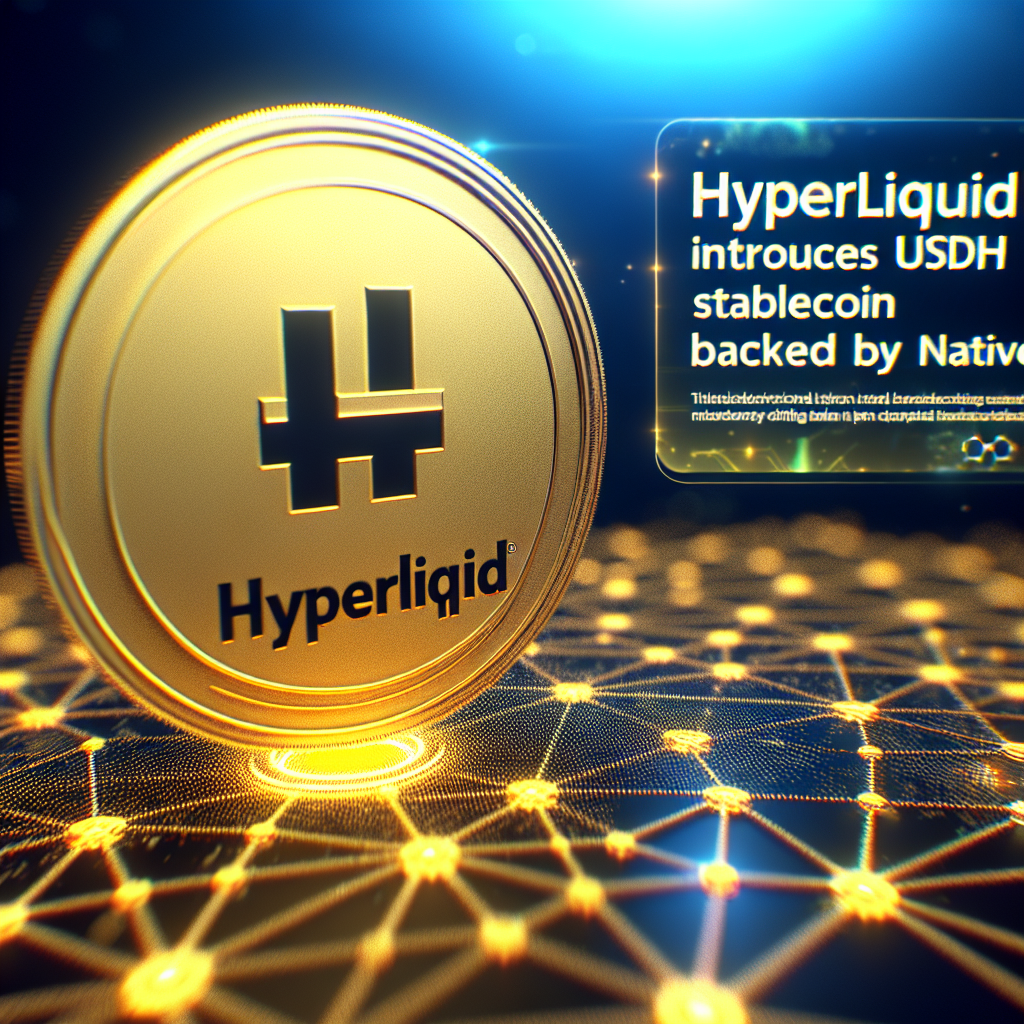Hyperliquid has introduced its native stablecoin, USDH, which debuted on Wednesday with a USDC trading pair, garnering nearly $2 million in initial trading.
The launch of USDH marks Hyperliquid’s first dollar-pegged asset, providing traders with a stable unit of account and collateral across the network.
Native Markets will oversee the exchange’s stablecoin and potential billions of dollars in transaction flows. This crypto startup, led by Hyperliquid investor Max Fiege, former Uniswap Labs president Mary-Catherine Lader, and blockchain researcher Anish Agnihotri, was elected through a validator vote on September 14.
According to Native Markets’ original proposal, the stablecoin is supported by cash and US Treasury equivalents and will utilize Bridge, Stripe’s tokenization platform, to manage reserves.
USDH is minted on HyperEVM, Hyperliquid’s Ethereum-compatible execution layer, allowing it to circulate throughout its network while minimizing dependence on external stablecoins like Circle’s USDC (USDC) and maintaining yield within its ecosystem.
Hyperliquid is a decentralized derivatives exchange that launched its HYPE token via airdrop in November 2024. In July, it handled around $330 billion in trading volume with a lean team of just 11 people.
Related: Crypto Firm Proposes Cutting HYPE Supply by 45%
The bidding war for Hyperliquid’s stablecoin
The bidding war for the rights to Hyperliquid’s stablecoin kicked off on September 5 when Hyperliquid announced it was initiating a governance process to award the USDH ticker.
Shortly after, Native Markets made a bid, pledging to issue USDH natively on HyperEVM and to allocate reserve income equally between HYPE token buybacks and ecosystem development funding.
In the ensuing hours and days, offers were submitted by Paxos, Sky, Frax Finance, Agora, Curve, OpenEden, Bitgo, and Ethena — although Ethena ultimately withdrew its bid in favor of endorsing Native Markets.
The process attracted criticism, with some, like Dragonfly venture capital managing partner Haseeb Qureshi, claiming it appeared designed to favor Native Markets, despite larger firms like Paxos, Ethena, and Agora presenting stronger proposals.
On September 9, Qureshi stated on X that he heard from “multiple bidders that none of the validators are interested in considering anyone besides Native Markets,” suggesting that Native Markets had prior knowledge of the USDH Request for Proposal announcement.
He also noted that Native Markets is a “brand new startup,” implying it doesn’t possess the track record to justify securing the bid so quickly.
Despite these critiques, Native Markets prevailed on September 14, winning Hyperliquid’s first major governance decision with over two-thirds of the validators’ votes.
In the past week, HYPE, Hyperliquid’s native cryptocurrency, has experienced a decline of around 7%, according to data from CoinGecko.
Hyperliquid is also facing new competition from Aster, a decentralized perpetual exchange operating on the BNB Chain.
On Wednesday, DefiLlama data indicated Aster’s daily perpetual trading volume was nearing $30 billion, more than double that of Hyperliquid, which had reported approximately $10 billion at the time of writing.
Magazine: 3 people who unexpectedly became crypto millionaires… and one who didn’t

